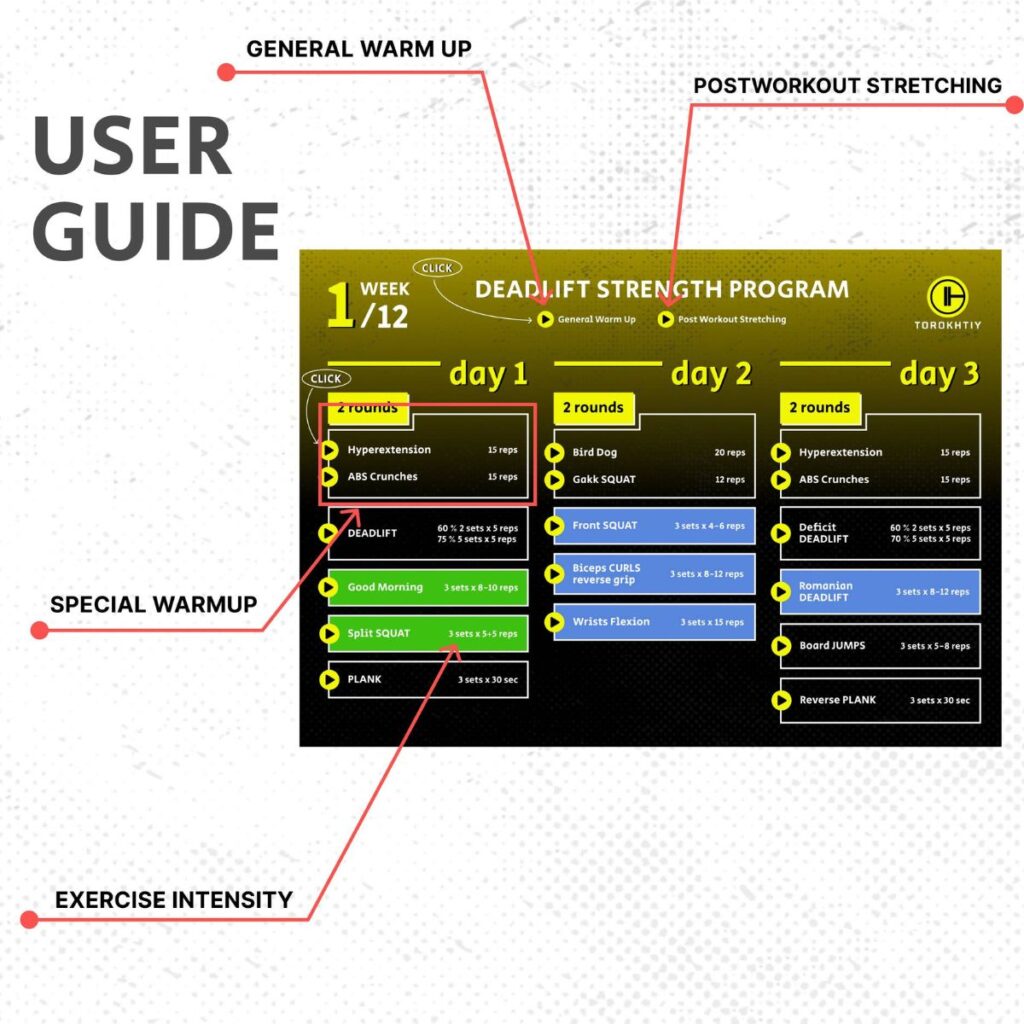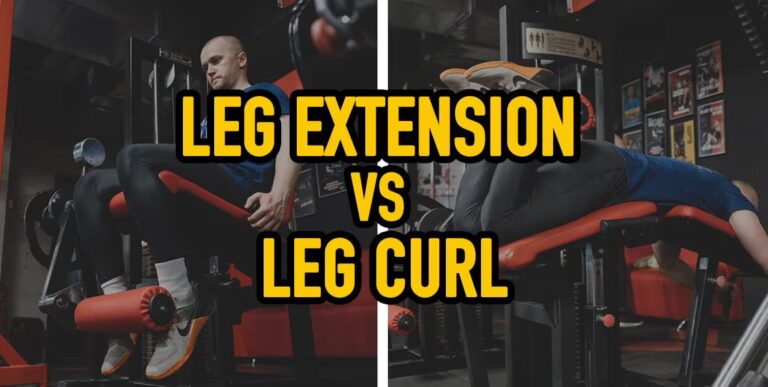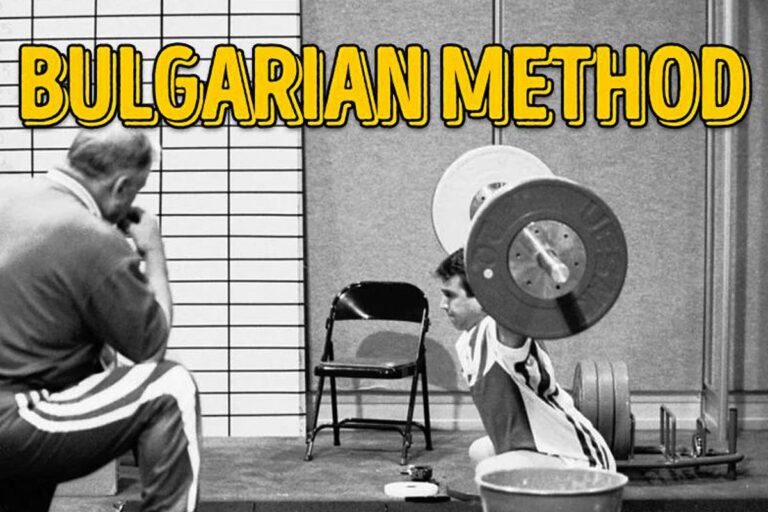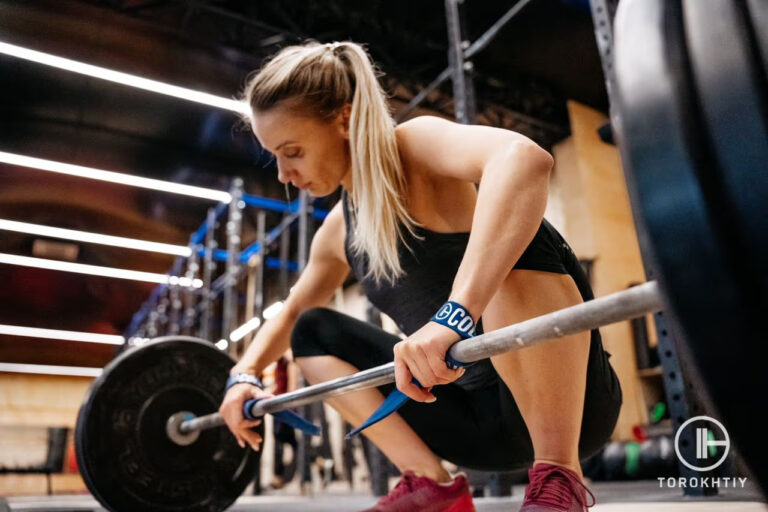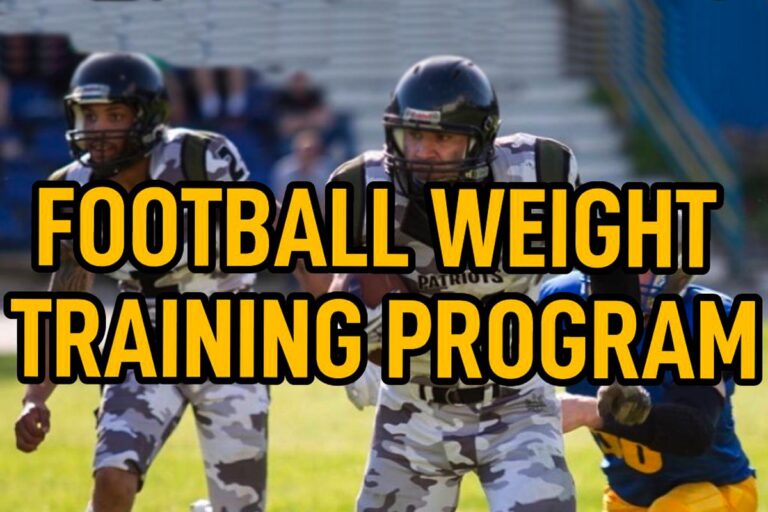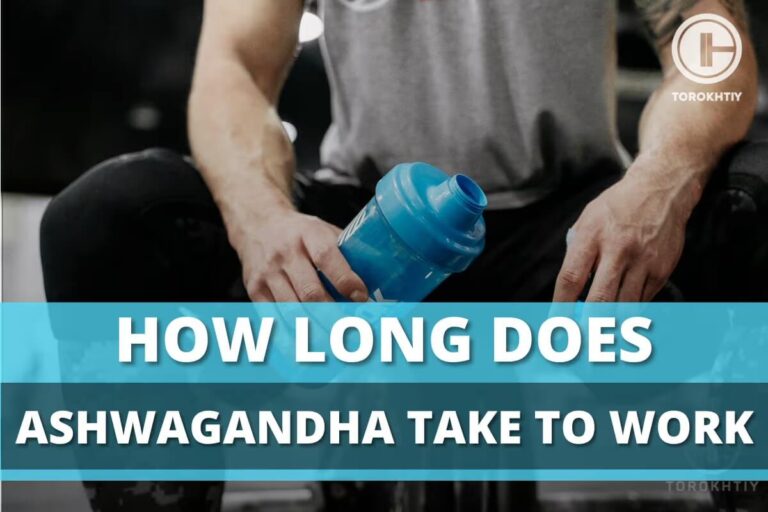Eccentric Deadlift: Pros/Cons Explained
Deadlifts form the foundation of any good lifter’s training regime. They work the full posterior chain and help to build power, strength, and better functional movement patterns.
Eccentric deadlifts provide one way to take the deadlift further, focusing on the downward phase where the muscles contract eccentrically. They can be performed using different variations which I’ll discuss below.
I’ve discussed the eccentric deadlift in depth below, looking at the pros, cons, and movement patterns used. Let’s get started!
How to adjust a treadmill belt? The first thing you need to do is to find the rear roller bolts (at the back of your treadmill). You’ll need an Allen wrench to tighten or loosen them. After you’re done, make sure to test it before you actually use it.

What Is An Eccentric Deadlift?
An eccentric deadlift involves lowering the barbell back to the floor whilst using your posterior chain to keep the weight under control. This means your muscles lengthen at the same time they contract to work against the forces of gravity that act on the barbell weight.
Depending on the deadlift variation, eccentric deadlifts heavily target your glutes, hamstrings, lower back, and core muscles among others. Eccentric deadlifts may be more commonly known as negatives which are also more commonly used for other lifts such as barbell curls.
Eccentric Deadlift Benefits
Compared to normal deadlifts, eccentric deadlifts can provide a host of extra benefits due to the longer time under tension. Here are just some of them:
✅ Increased Time Under Tension
Focusing on the eccentric portion of the deadlift means you lower the barbell down using a slower tempo than you would normally. This increased time under tension promotes more muscle growth due to the increased fiber breakdown shown in studies.
Your muscles need to contract more forcefully to keep the barbell under control, with the work getting harder as the barbell lowers further to the floor. Eccentric deadlifts provide a great way to improve time under tension and therefore muscle size.
✅ Improved Metabolic Rate
Increased time under tension means your muscles need to work harder. This in turn increases the amount of calories you burn in the gym and promotes a higher resting metabolic rate in the period following eccentric work.
Whether you’re looking to improve your body composition or make weight for a sports competition, this increased metabolic rate is usually always good.

✅ Better Flexibility
Eccentric deadlifting can lead to increases in lower limb flexibility. When lowering the barbell, your muscles contract whilst extending. This is the same action used when stretching, with the increased time under tension placing more emphasis on increasing the muscle fiber length.
This increase in muscle fiber length shifts the peak torque angle in the lower limb muscles, increasing flexibility with repeated practice.
✅ Improved Performance
Eccentric training leads to increases in force production as your muscles work to control the barbell. These increases have been directly linked to better sports performance, more specifically jumping, accelerating, or changing direction quickly.
Common sports or movements that may be improved by eccentric deadlifting include weightlifting, sprinting, cycling, and jumping.
✅ Stronger Connective Tissue
Alongside improvements in muscle strength, eccentric training helps to build stronger ligaments and tendons due to the higher level of force production required and increased time under tension.
Keeping our connective tissue strong is vital to ensuring longevity and preventing injury.

Eccentric Deadlift Cons
Whilst eccentric deadlifts have a host of benefits, there may be some potential cons involved with the increased time under tension:
❌ Increased Injury Risk
Unfortunately, any movement that requires more work output usually has a higher risk of injury due to the increased work required by the muscles to perform the movement correctly.
The increase in delayed onset muscle soreness (DOMS) seen with eccentric deadlifting means your body may require more rest between sessions in order to limit the risk of injury.
❌ Increase Lumbar Spine Stress
Keeping the barbell under control during the eccentric portion involves your lower back which works to keep a neutral spine. Lowering the barbell under control at a slower tempo puts your lumbar spine under more stress compared to lowering the bar at a normal speed.
This increased stress puts you at more risk of shifting away from a tight body position and putting more load on your lumbar spine which can lead to lower back injury. This means that eccentric deadlifting may not be suitable for those with lower back issues or pre-existing injuries.
How To Do An Eccentric Deadlift
Different variations can be performed including eccentric Romanian deadlifts, accentuated deadlifts, and slow-tempo eccentrics. Follow these tips to perform these different deadlift variations correctly and safely:
1. Eccentric Romanian Deadlifts
- Assume a shoulder-width stance with your toes pointing forwards and shins nearly touching the bar
- Using a shoulder-width grip, take the slack out of the barbell and pull it off the floor whilst maintaining a neutral spine
- Once your knees are fully extended, brace your core and lower the barbell back down by bending at your hips instead of your spine.
- Maintain a slight bend in the knees and push your hips back until you feel a stretch in your hamstrings
- Focus on lowering the bar down slowly under control by counting to three before the bar touches the floor
2. Accentuated Deadlifts
- Set the J-hooks or safety bars to just above your lockout position
- Load the barbell with 105-130% of your 1RM
- Brace your core, keep your chest up, and face forward. Unrack the barbell and take a step back
- Whilst maintaining a neutral spine, lower the barbell slowly to the ground whilst maintaining control. Count to between 3-5 seconds before the barbell touches the ground
- Unload the plates and return the barbell to the starting position
3. Slow-Tempo Eccentrics
- Break your deadlift movement down into four phases – the concentric phase, pause at the top, eccentric phase, and pause at the bottom
- Start with the concentric phase of the deadlift for slow-tempo eccentrics
- Set the desired tempo. For this example let’s use 3-1-0-1.
- 3 = eccentric 1 = bottom pause 0 = concentric 1 = top pause
- Explode up and hold the barbell at the top for one second
- Lower the barbell for three seconds and rest at the bottom for one second
- Repeat this tempo for the desired number of reps and sets
🔻12-Week Deadlift Strength Program by Oleksiy Torokhtiy
Unlock your true potential with our Deadlift Strength Program!
Designed for athletes by 2-time Olympian Oleksiy Torokhtiy, this 12-week program focuses on enhancing your deadlift strength, strengthening your back and legs.
Program details:
- 12 weeks;
- 3 days / week;
- 45-120 minutes per session;
- 50+ specific exercises;
- Focus on New Result in Deadlift;
- One-time payment, no recuring payments;
- Full access to all training content.
Start now and boost your deadlift results!
FAQ
Is The Eccentric Portion Up Or Down On A Deadlift?
The deadlift can be divided into two distinct movements. These are the concentric and eccentric phases. The eccentric phase involves lowering the bar down to the floor, with your posterior chain working to maintain barbell control.
Should You Control The Eccentric On A Deadlift?
Controlling the eccentric portion of a deadlift is an excellent way to increase time under tension and promote bigger muscle gains. You can drop the bar, however most commercial gyms prefer you to lower it under control to protect the barbell and gym floor.
Conclusion
The eccentric phase of deadlifting involves focusing more on the lowering portion of the deadlift where the muscles contract whilst lengthening to bring the barbell down under control. Eccentric deadlifts have a host of benefits including more muscle growth, increased flexibility, and improved performance.
Different eccentric deadlift variations include eccentric Romanian deadlifts, accentuated deadlifts, and slow-tempo deadlifts. Each has its applications and benefits and can be performed safely using my guides above.
Do you use eccentric deadlifts in your gym program? What’s your experiences with them? Let me know in the comments section.
Also read:
- Good Morning vs Deadlift
- Average Deadlift
- Deadlift Stances
- Bad Deadlift Form
- Is Sumo Deadlift Easier
- Do Deadlifts Work Glutes
- What Muscles Does Deadlift Work
- Rack Pull vs Deadlift
- Deadlift Program
References:
- How to Strengthen Your Posterior Chain Muscles // HealthLine: https://www.healthline.com/health/posterior-chain
- Negative repetition // Wikipedia: https://en.wikipedia.org/wiki/Negative_repetition
- Electromyographic Activity of the Hamstrings During Performance of the Leg Curl, Stiff-Leg Deadlift, and Back Squat Movements // JSCR: https://journals.lww.com/nsca-jscr/abstract/1999/05000/electromyographic_activity_of_the_hamstrings.12.aspx
- The role of metabolites in strength training // Springer: https://link.springer.com/article/10.1007/BF00240413
- The effects of eccentric training on lower limb flexibility // BJSM: https://bjsm.bmj.com/content/46/12/838
- Eccentric exercise // Journal of Physiology: https://journals.physiology.org/doi/full/10.1152/japplphysiol.00146.2013?
- Chronic Adaptations to Eccentric Training // Springer: https://link.springer.com/article/10.1007/s40279-016-0628-4
- Eccentric Muscle Contractions // Frontiersin: https://www.frontiersin.org/articles/10.3389/fphys.2019.00536/full
Why Trust Us?
With over 20 years in Olympic Weightlifting, our team does its best to provide the audience with ultimate support and meet the needs and requirements of advanced athletes and professional lifters, as well as people who strive to open new opportunities and develop their physical capabilities with us.
By trusting the recommendations of our certified experts in coaching, nutrition, dietology, and sports training programming, as well as scientific consultants, and physiotherapists, we provide you with thorough, well-considered, and scientifically proven content. All the information given in the articles concerning workout programming, separate exercises, and athletic performance, in general, is based on verified data. We ensure that you can rely on our professionals’ pieces of advice and recommendations that can be treated as personalized ones which will benefit you and fully meet your needs.
The product testing process is described in more detail here
Author: Sergii Putsov
Head of Sport Science, PhD
Best Results: Snatch – 165 kg,
C&J – 200 kg
Sergii Putsov, Ph.D., is a former professional weightlifter and National team member, achieving multiple medals in the 94 kg weight category at national competitions. With a Master’s degree in “Olympic & Professional Sport Training” and a Sport Science Ph.D. from the International Olympic Academy, Greece, Sergii now leads as the Head of Sport Science. He specializes in designing training programs, writing insightful blog articles, providing live commentary at international weightlifting events, and conducting educational seminars worldwide alongside Olympic weightlifting expert Oleksiy Torokhtiy.

